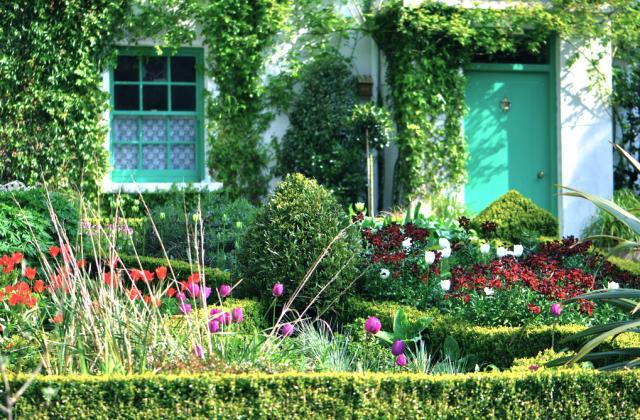Using Climbing Plants in the Garden
Using Climbing Plants in the Garden
When there does not seem to be any space in the garden for any more plants, raise your eyes from the ground and have a good look around.
There will undoubtedly be a number of vertical surfaces available, either on the house itself or on outbuildings and perimeter walls and fences. Perhaps doorways and seating areas would benefit from purpose-built structures such as pergolas and arbours which can be clothed with a profusion of verdant growth to provide shelter – and at certain times of the year be festooned with a mass of blossom too. Even if no boundaries are available it may be possible to use obelisks to add height to planting or partition areas of the garden with trellis panels to create discreet garden rooms. These too can be clothed with climbing plants.
The bare stone or brick wall of a house can present a sterile, uninviting picture, particularly if the concrete driveway is taken right up to the walls of the house. See how the view is enhanced when beds are left within the paving so that vegetation or perhaps a tree is able to soften the starkness of the surroundings and provide a cool refuge from the baking sun. See too, how much better it looks when a climbing plant is trained on wires to garland the house and frame the doorways and windows. This will also perform a role in regulating the temperature of the house providing summer coolness and winter warmth – a factor seized upon by nesting birds and overwintering wildlife.
The Local Scene
The choice is vast; the only limit is your imagination with country cottage favourites such as climbing roses, wisteria honeysuckle, jasmine and clematis all popular selections. All require support and perform best in a sunny or part shaded position. Others such as ivy, climbing hydrangea and Virginia creeper are self-clinging and can race up to great heights if not checked, finding their way into gutters and chimney stacks, so keep an eye on them. Plants that require support are more easily contained and can be easily removed if access for maintenance to the wall or fence is required. Ivy is ideal for a shaded position and will only damage old, poorly maintained masonry, contrary to popular belief. Climbing hydrangea is another self-clinging shade lover, garlanded with cream lacecaps in midsummer.
Plants trained in two dimensions will grow taller than when allowed to be self-supporting in three dimensions; display their flowers better and will be less inclined to produce woody voids typical of the internal canopy of a tree, which is fine in the right place but many gardens lack the luxury of space to allow this. Because of their potentially large size, few climbers will perform well in pots unless tended to on a daily basis, which will restrict your opportunities for taking a holiday or going away for a weekend. Should there be no alternative however, be sure to choose as large a pot as possible and use a free-draining loam based compost which is fed and watered regularly. Once access to the ground is achieved, you can forget about most climbing plants as they exploit the moist soil found under paved surfaces. They will need no additional watering once established, so it is well worth lifting the odd paving slab or cutting a hole in cast concrete. You will not regret the initial cost in time and labour which enable the plants to reach their full potential.
Social Climbers
Many climbers work well together, one using the other for support, some flowering early such as clematis, romping through a stronger woody plant such as a summer flowering climbing rose or clambering through an old tree. Summer flowering clematis is good for covering the bare legs of a climbing rose and pleasing colour combinations are easily achieved. Honeysuckle can seem a scrawny specimen when grown in isolation on a trellis panel but it really comes into its own when allowed to clamber through other plants and is best not pruned. Few plants will change the character and feel of an area the way climbers do, whether it is the chocolate box country cottage conversion of climbing roses trained around doors or windows, the creation of a fragrant arbour of jasmine and rambler roses or a lush jungle created by the exotic passion flower or trumpet vine. Don’t be restricted to flowers as some of the more vigorous climbers are grown for their foliage such as ornamental vines or the brilliant autumn colours provided by Boston ivy or Virginia creeper. Grape vines can give a Mediterranean feel to any garden.
Kevin Revell ‘Plant Area Manager at Caerphilly Garden

